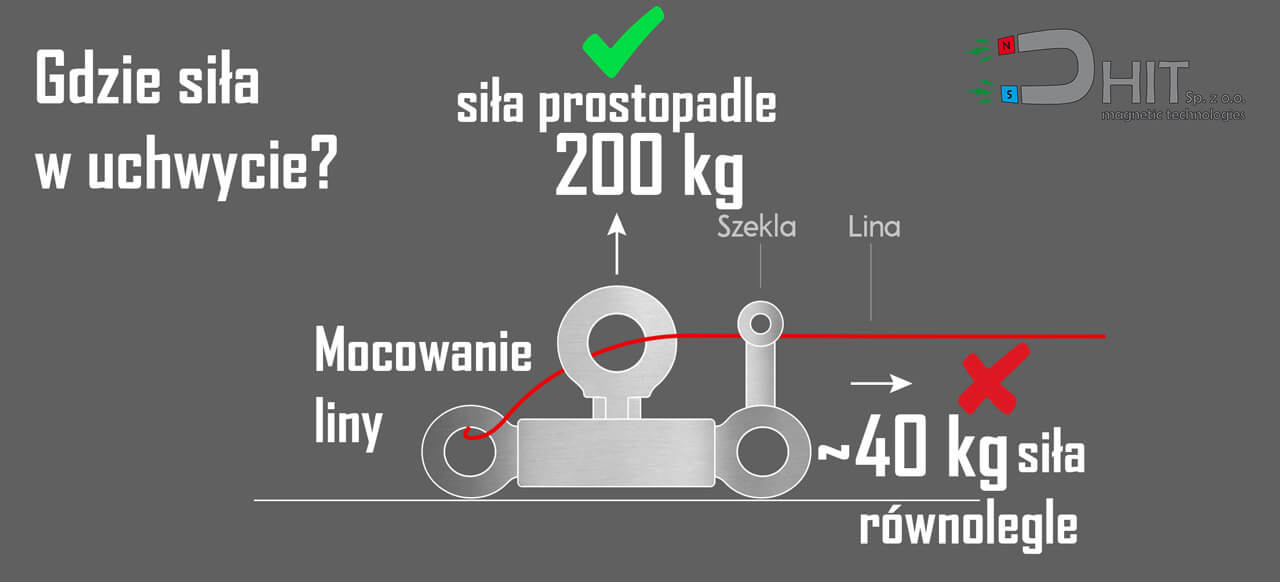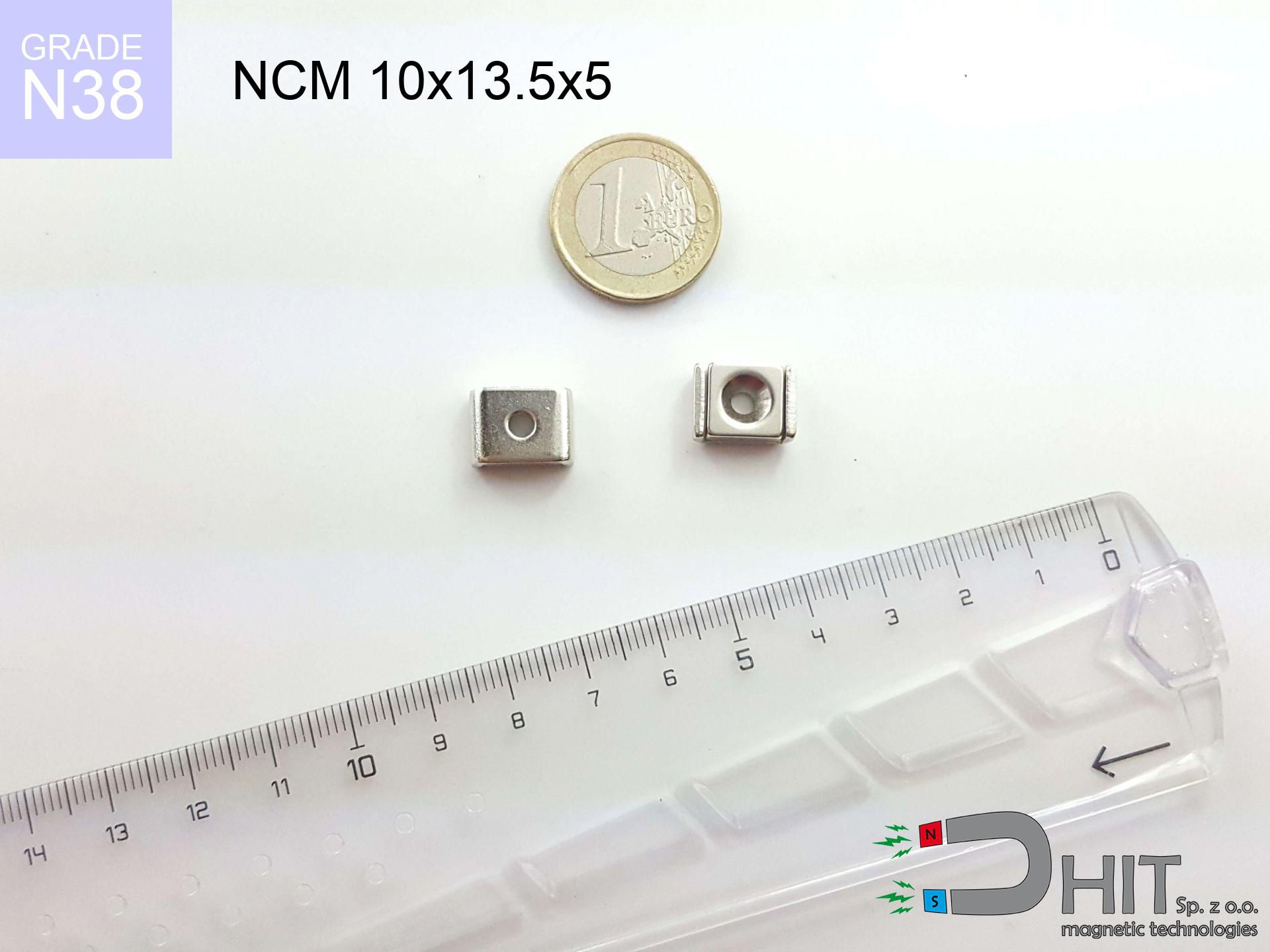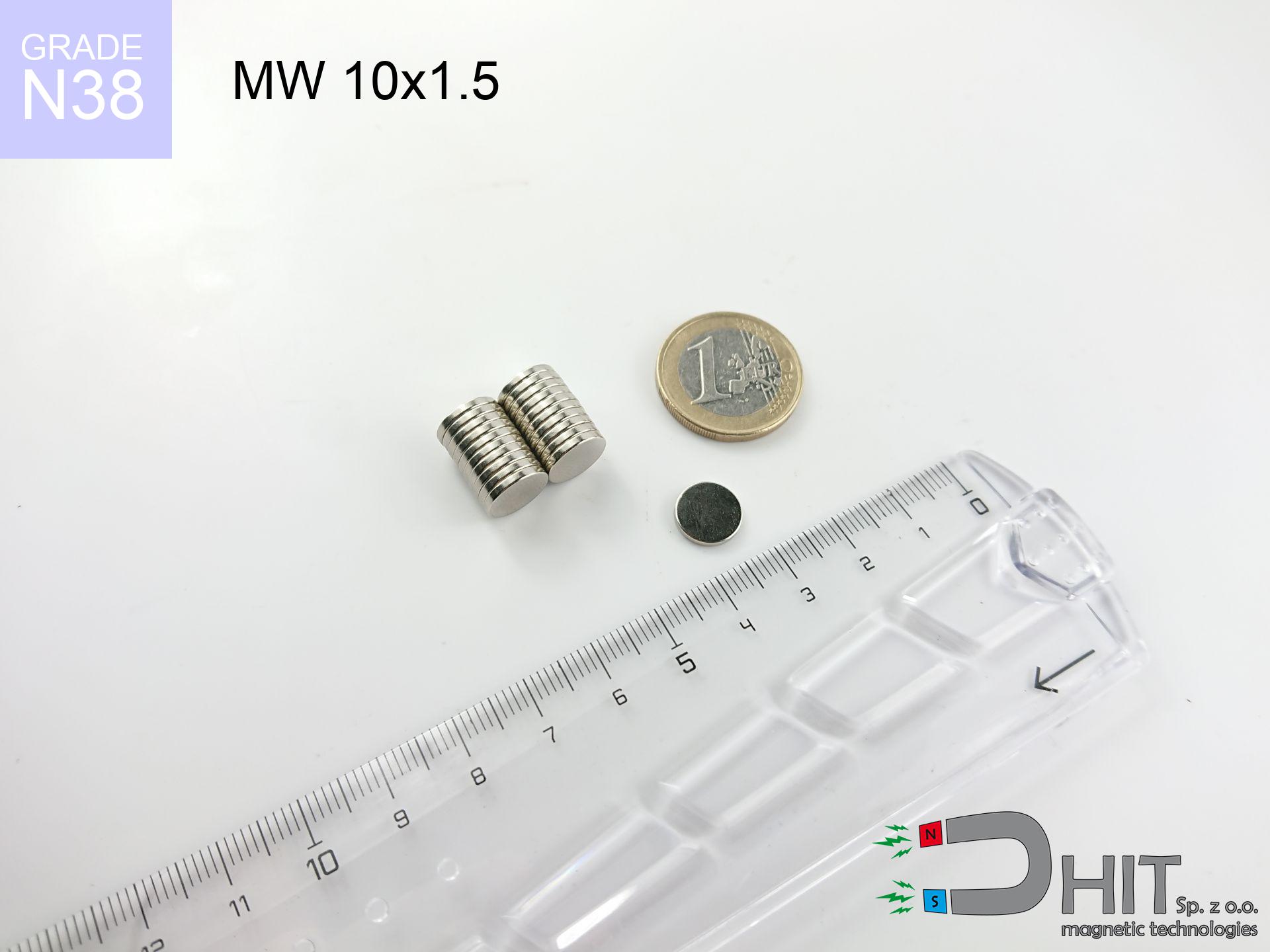UMP 94x28 [3xM10] GW F300 GOLD / N38 - search holder
search holder
catalog number 210447
GTIN: 5906301814115
diameter Ø
94
mm [±0,1 mm]
height
28
mm [±0,1 mm]
capacity ~
330.00 kg / 3236.19 N
max. temperature
≤ 80
°C
catalog number 210447
GTIN: 5906301814115
diameter Ø
94 mm [±0,1 mm]
height
28 mm [±0,1 mm]
capacity ~
330.00 kg / 3236.19 N
max. temperature
≤ 80 °C
200.00 ZŁ gross price (including VAT) / pcs +
162.60 ZŁ net price + 23% VAT / pcs
bulk discounts:
need more quantity?Don't know what to buy?
Call us tel: +48 22 499 98 98 or contact us via form on the contact page. You can check the power and the appearance of neodymium magnets in our magnetic mass calculator magnetic calculator
Orders placed by 2:00 PM will be shipped on the same business day.
Specification: search holder 94x28 [3xM10] GW F300 GOLD / N38
Magnetic properties of the material N38
Physical properties of sintered neodymium magnets Nd2Fe14B

Shopping tips
Advantages as well as disadvantages of neodymium magnets NdFeB.
In addition to immense strength, neodymium magnets have the following advantages:
- They do not lose power over time - after about 10 years, their strength decreases by only ~1% (theoretically),
- They are highly resistant to demagnetization by external magnetic sources,
- By applying a shiny coating of nickel, gold, or silver, the element gains an aesthetic appearance,
- They possess very high magnetic induction on the surface of the magnet,
- Thanks to their high temperature resistance, they can operate (depending on the shape) even at temperatures up to 230°C and above...
- Thanks to the flexibility in shaping and the ability to adapt to specific requirements – neodymium magnets can be produced in various forms and dimensions, which enhances their versatility in applications.
- Key role in modern technologies – are used in HDD drives, electric drive mechanisms, medical devices and various technologically advanced devices.
Disadvantages of neodymium magnets:
- They can break as they are extremely fragile when subjected to a powerful impact. If the magnets are exposed to impacts, it is suggested using magnets in a protective case. The steel housing in the form of a holder protects the magnet from impacts and simultaneously increases its overall strength,
- High temperatures can reduce the power of neodymium magnets. Typically, after heating above 80°C, most of them experience a permanent reduction in strength (although it is dependent on the shape and size). To prevent this, we offer special magnets marked with the symbol [AH], which are highly resistant to high temperatures. They can operate even at temperatures up to 230°C, making them an ideal solution for applications requiring high-temperature operation,
- They rust in a humid environment. For outdoor use, we recommend using waterproof magnets, such as those made of rubber or plastic,
- The use of a cover - a magnetic holder is recommended due to the limited production capabilities of creating threads or complex shapes in the magnet
- Potential hazard arising from small pieces of magnets are risky, when accidentally ingested, which is crucial in the context of child safety. Furthermore, miniscule components of these products can complicate diagnosis when they are in the body.
Precautions
Do not bring neodymium magnets close to GPS and smartphones.
Intense magnetic fields generated by neodymium magnets interfere with compasses and magnetometers used in navigation, as well as internal compasses of smartphones and GPS devices.
Neodymium magnets are extremely fragile, leading to their cracking.
Magnets made of neodymium are extremely fragile, and by joining them in an uncontrolled manner, they will crack. Magnets made of neodymium are made of metal and coated with a shiny nickel, but they are not as durable as steel. In the event of a collision between two magnets, there may be a scattering of fragments in different directions. Protecting your eyes is crucial in such a situation.
Neodymium Magnets can attract to each other due to their immense internal force, causing the skin and other body parts to get pinched and resulting in significant injuries.
Magnets will attract each other within a distance of several to about 10 cm from each other. Remember not to insert fingers between magnets or alternatively in their path when they attract. Depending on how large the neodymium magnets are, they can lead to a cut or a fracture.
If you have a nickel allergy, avoid contact with neodymium magnets.
Studies show a small percentage of people have allergies to certain metals, including nickel. An allergic reaction often manifests as skin redness and rash. If you have a nickel allergy, you can try wearing gloves or simply avoid direct contact with nickel-plated neodymium magnets.
Neodymium magnets should not be near people with pacemakers.
Neodymium magnets produce strong magnetic fields that can interfere with the operation of a heart pacemaker. Even if the magnetic field does not affect the device, it can damage its components or deactivate the entire device.
Dust and powder from neodymium magnets are flammable.
Avoid drilling or mechanical processing of neodymium magnets. If the magnet is crushed into fine powder or dust, it becomes highly flammable.
Neodymium magnets are over 10 times stronger than ferrite magnets (the ones in speakers), and their power can shock you.
Please review the information on how to handle neodymium magnets and avoid significant harm to your body, as well as prevent unintentional disruption to the magnets.
Neodymium magnets can become demagnetized at high temperatures.
In certain circumstances, Neodymium magnets may experience demagnetization when subjected to high temperatures.
Magnets should not be treated as toys. Therefore, it is not recommended for youngest children to have access to them.
Neodymium magnets are not toys. Do not allow children to play with them. In the case of swallowing multiple magnets simultaneously, they can attract to each other through the intestinal walls. In the worst case scenario, this can lead to death.
Make sure not to bring neodymium magnets close to the TV, wallet, and computer HDD.
The strong magnetic field generated by neodymium magnets can destroy magnetic media such as floppy disks, video tapes, HDDs, credit cards, magnetic ID cards, cassette tapes, or other devices. They can also destroy devices like video players, televisions, CRT computer monitors. Remember not to place neodymium magnets close to these electronic devices.
In order for you to know how strong neodymium magnets are and why they are so dangerous, see the article - Dangerous strong neodymium magnets.

![UMP 94x28 [3xM10] GW F300 GOLD / N38 - search holder UMP 94x28 [3xM10] GW F300 GOLD / N38 - search holder](https://cdn3.dhit.pl/graphics/products/ump-94x28-m10-gw-f300-vux.jpg)





